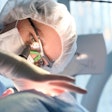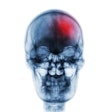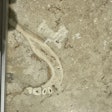
SAN FRANCISCO - Sports dentists can play a vital role in protecting athletes' oral health, said Howard Chi, D.M.D., M.A., a University of the Pacific (UOP) sports dentist, Thursday at the California Dental Association (CDA) fall meeting.
"As a team dentist, not only are you providing emergency care, but you're educating the athletes and coaches," Dr. Chi said.
About 15 million dental injuries take place in the U.S. every year, he said, and 13% to 39% are related to sports, so demand for sports dentistry is high.
Dr. Chi works with all the sports teams at UOP, serving more than 350 athletes there, and has branched out into professional teams as well. After attending games as a fan for the Ports baseball team, an Oakland Athletics affiliate in Stockton, CA, he approached the trainers to ask if they needed a dentist.
The team gladly accepted his offer, and gradually the word spread to the Stockton Thunder, an affiliate of the Edmonton Oilers; the Stockton Lightning Arena Football 2 team; and the California Cougars Professional Arena Soccer League team, all of which made him their official dentist.
These are not salaried positions. But the UOP health plan covers athletes injured while participating in a school sport, while the professional teams' insurance policies pay for dental care for their athletes, Dr. Chi said.
Mouthguards
To prevent injuries, Dr. Chi vigorously advocates the use of mouthguards. Boxing is the only sport in which mouthguards are required. But he believes participants in all sports -- even water polo and cycling -- should wear them.
Many athletes resist, however. "They've had bad experiences because they bought them in the store and they couldn't breathe or felt the mouthguard didn't fit well," Dr. Chi said.
— Howard Chi, D.M.D., M.A.
That's one reason why Dr. Chi doesn't recommend this type of mouthguard. Straps are not recommended with mouthguards unless they are detachable, he said. A player can sustain more injuries if a strap is attached to the face guard of a helmet and the helmet is pulled off, he noted.
Boil-and-bite mouthguards are only slightly better. While they mold to the patient's dentition, athletes often chew through the occlusal surfaces. And they often trim off the peripheral surfaces, reducing the protection they provide, Dr. Chi said.
Much better are mouthguards that dentists custom make. Athletes who try them are often impressed by how much more easily they can breathe around them. Ideally, the mouthguards should be colored so that referees can spot them, he said. They should be replaced every season.
The most expensive mouthguards are trilaminated. The Academy for Sports Dentistry recommends these, and they may be better than less expensive custom mouthguards, according to Dr. Chi. But the ADA only recommends that mouthguards be custom-made, he noted. Most dentists do not make laminated mouthguards because of the expense of the equipment to fabricate them. Dr. Chi only makes custom mouthguards for the 25 athletes of the women's field hockey team in his care.
Dr. Chi takes a careful patient history as another preventive measure. In general, athletes take good care of their oral health because their bodies are so important to what they do, he said.
An important exception is chewing tobacco. Too many athletes still chew, endangering their own health and setting a bad example for young fans.
Dr. Chi also looks for signs that the patient is frequently regurgitating, which some athletes do to stay within weight limits. Often trainers like to be quietly informed of such signs, he said.
Sports-related injuries
Even mouthguards won't prevent all injuries, though they will usually reduce the severity, Dr. Chi said. "Throughout my career, I've seen a lot of interesting things that can happen," said Dr. Chi, before launching into a slideshow of dental injuries.
One of the mildest types of trauma he typically encounters is an enamel fracture without loss of tooth structure. These typically don't require treatment, but an enamel fracture that exposes or damages the pulp or dentin can be restored using typical restorative materials.
For various other types of trauma, the treatment is similar. If the teeth have been knocked around but aren't fractured or mobile and are still vital and correctly positioned, you can often just watch and wait, Dr. Chi said.
But when teeth have been bashed out of position, he recommends gently pushing them back and holding them in place with a flexible splint. He showed images of splints made from orthodontic wire and even 30-gauge fishing line, then attached to teeth. A rigid splint can cause the tooth to ankylose, he warned.
Patients whose teeth have been repositioned should stick to a soft-food diet and rinse with chlorhexidine twice a day while the teeth are splinted, Dr. Chi said. He warns patients that the teeth may eventually need root canal treatment.
The athletes should refrain from their sport during this time. "Once the splint is removed and I can confirm that the tooth is viable, I let them go back to playing," he said.
In extrusive luxation, the impact is oblique instead of frontal. If the injury took place more than 48 hours earlier, you may not be able to move the tooth back into place because coagulant may fill the socket. You can still anesthetize the patient and give it a try, though, Dr. Chi said.
In intrusive luxation, the clinician can choose among three options. If the tooth isn't mature and the apex is still open, it may erupt spontaneously. If the tooth is mature, you can either pull it into place with forceps or refer the patient for orthodontic treatment.
Avulsion
What happens when a tooth comes out completely? That occurs about 5 million times every year in the U.S., Dr. Chi said. Some athletes may not mind. "For most hockey players, missing teeth are a badge of honor, so they would rather walk around without them," he said.
For most other athletes though, the treatment depends on what happens immediately after the tooth comes out. Ideally, the patient should store the tooth under his or her tongue and get to the dentist within 60 minutes. (Patients or their parents can also try reimplanting the tooth themselves, though Dr. Chi has known of some who put them in backward.)
Storing the tooth in milk or saline solution can also help keep it viable. And commercial products are available that work for preserving teeth.
If a patient arrives with a properly preserved tooth that came out within 60 minutes, you can rinse the root with saline and rinse any coagulant from the socket, Dr. Chi said. Next, examine the socket for any debris or fracturing of the socket. Finally, attempt to reimplant the tooth. If you feel any resistance, back off and examine the socket once again. A bone fragment might be in the way.
If the tooth has been stored for more than 60 minutes, follow the same first steps: Rinse the root and socket, and examine the socket. But before reimplanting the tooth, extract the pulp, then soak the tooth in 2% sodium fluoride for 20 minutes. Complete the root canal therapy extraorally, fill the tooth with gutta-percha sealer, then reimplant.
What if the tooth hasn't been stored properly? You can still try reimplanting it.
No matter how long the tooth was stored, you should next prescribe an antibiotic, such as amoxicillin, and refer the patient for a tetanus shot, he said.
Often, soft-tissue damage comes along with the bashed teeth, Dr. Chi said. You should palpitate to look for debris. Sometimes, a tooth itself can be embedded in the soft tissue. Check whether the patient has bitten his or her tongue. Finally, he said, prescribe an antibiotic.
Concluding the presentation, Dr. Chi fielded questions, then made a beeline for his car. "Hockey season just started up, and I'm going to be pretty busy," he said.
Copyright © 2009 DrBicuspid.com



















